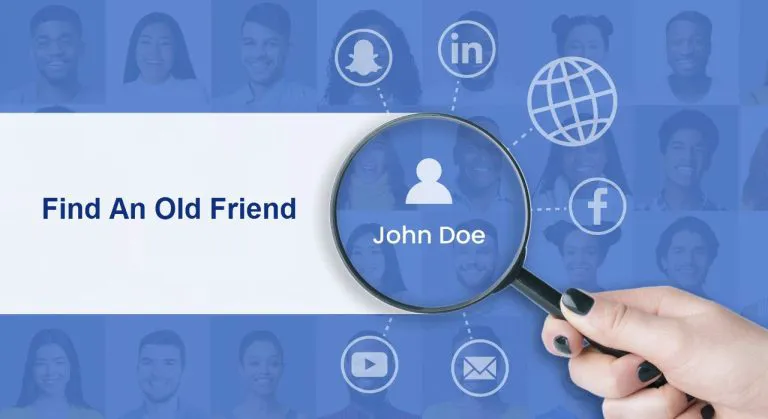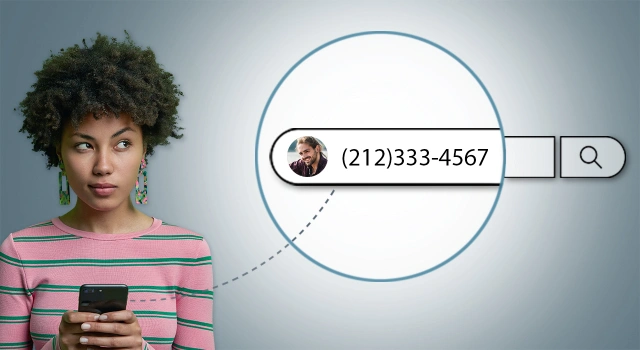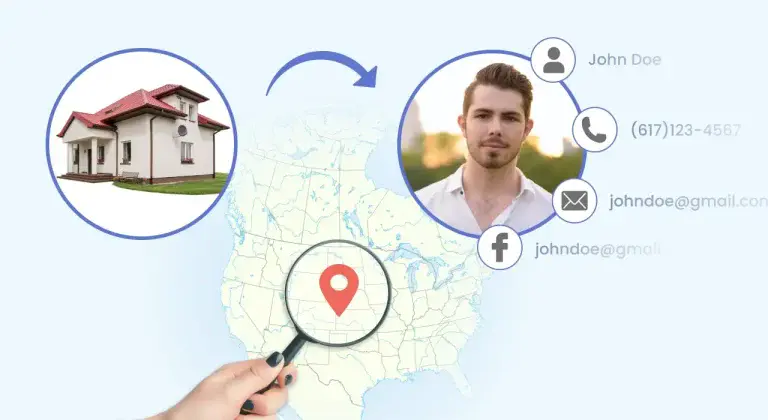Case Study: Tracing People Search Data
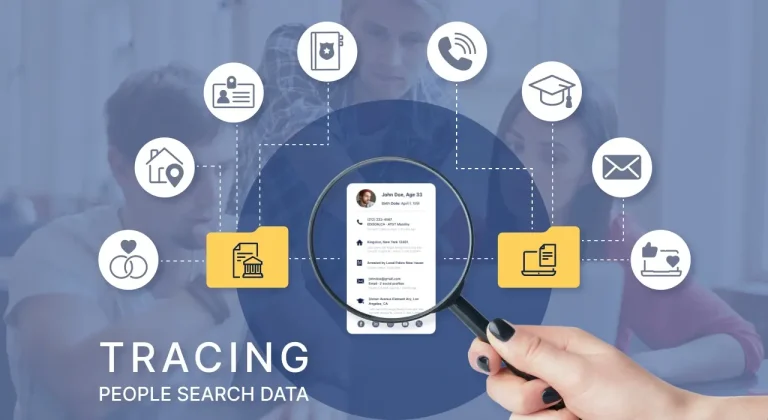
In this case study, we delve into the world of people search data by tracing the sources of information provided by several people search companies. After thorough analysis, our team has identified the origins of the majority of data points in the reports. Join us as we uncover the sources of people search data and by the end of this journey, you may develop your own insights about a people search report.
We selected John Smith’s report generated by people search sites and attempted to trace the data sources and assess the origins of the information provided.
Part 1: Tracing government records
Tracing Criminal Records
We started with criminal records because they are generally credible and unique. According to the people search report, John Smith had records in Florida’s Clay County. Our process was as follows:
- Google “Clay County court records” and navigate to the official Clay County Clerk of Court page.
- Click Court Records.
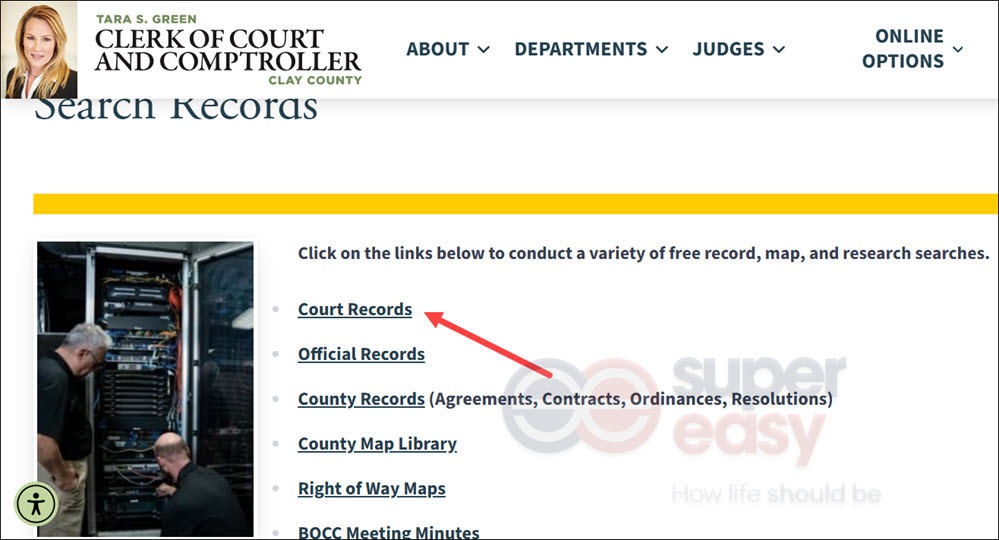
- Enter the required information: Last name (Smith), First name (John). Strict adherence to the input format is necessary to avoid incorrect results.
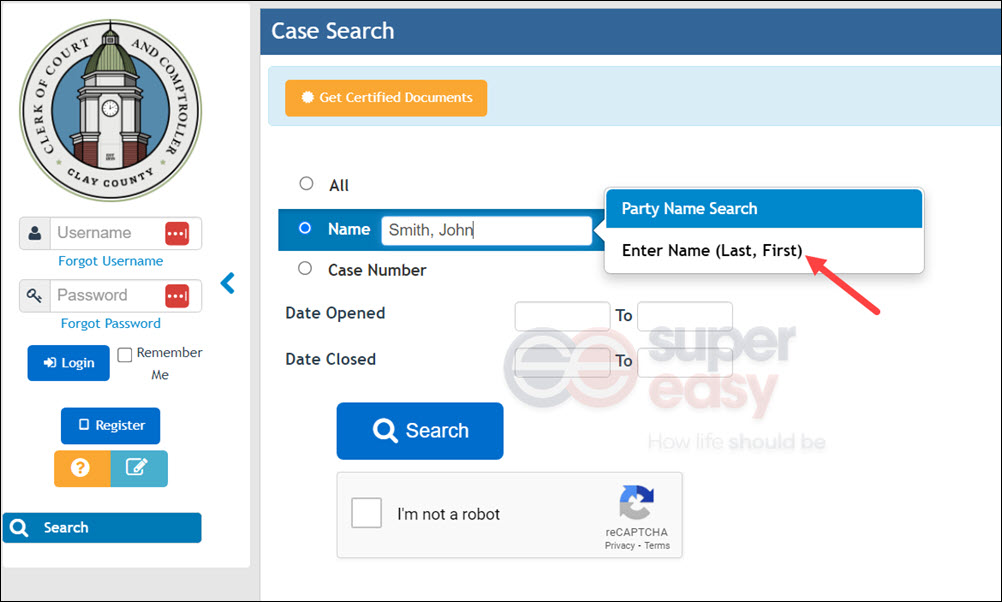
- The search returned 11 cases.

- Click on each exact name match to review detailed information: Name, DOB, party type, case number, and status.
The personal information in the record matches the owner of the report. The case number, personal details, and sanctions align with the people search report, proving that the criminal records most likely originated from the Florida Clay County court. However, not all criminal records are perfectly matched. We found some criminal records listed in the report missing the date of birth, and some records’ ethnicity did not match the report owner. Even if the source comes from a government database, the matching algorithm may sometimes mistakenly include records of other people who share the same name.
Tracing Voter Registration
Next, we move to the voter registration history, another unique government record that contains important information. The people search report shows John Smith in Florida, so we search for voter registration specific to Florida.
- Search for “florida + voter registration.”
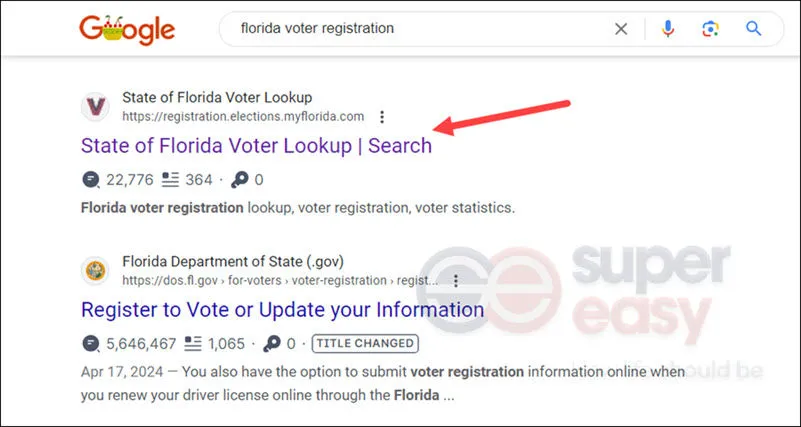
- Enter the name and DOB to access (requirements may vary by state).
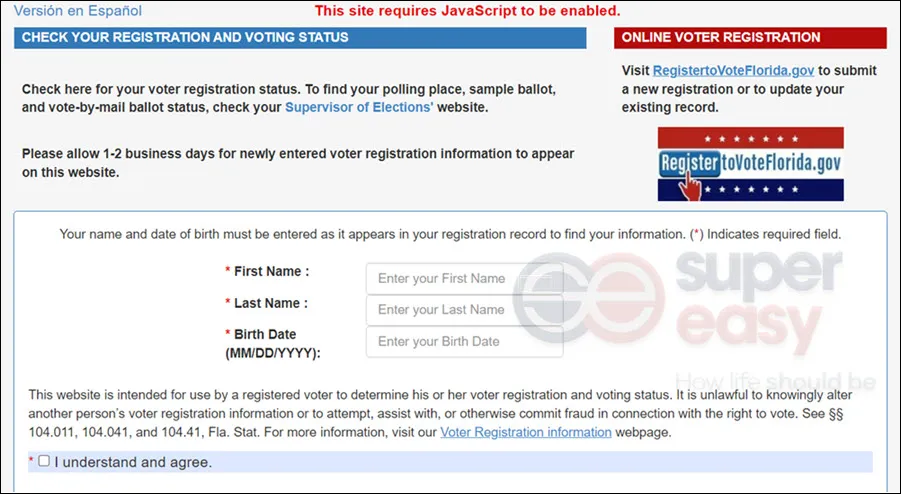
- Review voter registration information: Registered address; voter ID, registration date, party, and status.
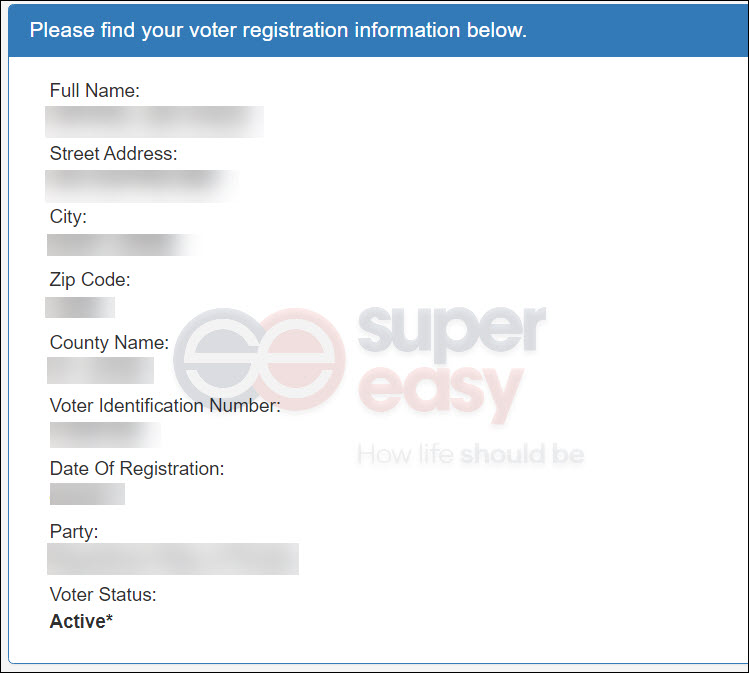
Using the date of birth obtained from criminal records, we successfully accessed the record, confirming that John Smith did register in Florida. The party and registration address on the people search report matched with the voter registration records.
Moreover, people search reports also included previous party affiliations and old registration addresses. However, the various state voter lookup systems we tried only display current registration information. This difference is likely because people search sites strive to provide as much info as possible, so they tend to retain old data to offer users a better understanding of an individual.
People search reports no longer include the exact date of birth. Now there’s only the birth month and year.
Tracing marriage records
People search reports may include marriage records. The report shows where the marriage records were found. With the given clue, we found the electronic version of the record. Here’re the steps we took:
- Locate the place of issue and find it’s within Clay County.
- Search “Clay County FL marriage records” in Google.
- Search the official database with the last name and first name.
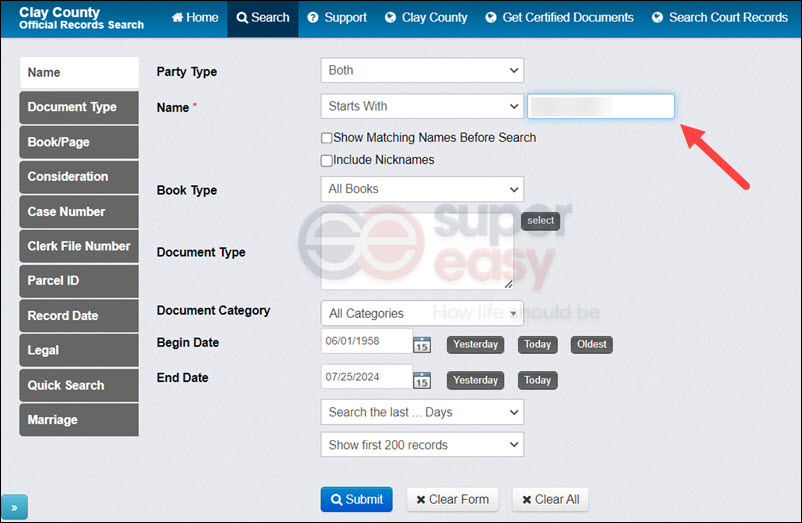
- Find “MARRIAGE LICENSE ONCORE” in the results.
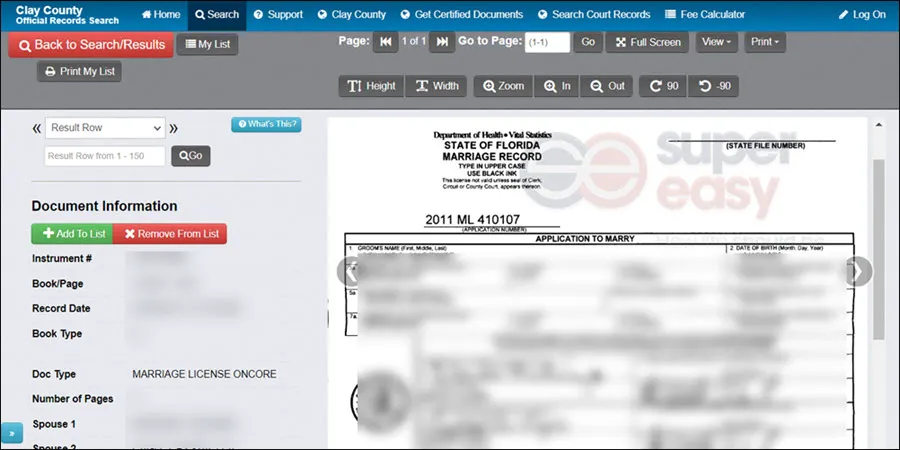
The results provided the marriage license, the partner’s name, couple’s DOB, and birthplace. The full name, DOB, confirmed the marriage records belong to the owner of the report. Note that people search reports won’t show such detailed information; they typically display the marriage date, bride, and groom’s names. Therefore, when you see a marriage record on a report, it is better to verify whether the record belongs to the owner of the report.
It’s quite clear that the origin source is from Clay County official records, but we want to mention that each county and state has different regulations regarding disclosing marriage records. Due to privacy concerns, some states or counties don’t allow access to these records.
Tips:
- Some counties share the same name across different states. Searching “county + state” can help you locate the specific government resources more effectively.
- Statewide searches may lead you to Vitalcheck, a certified vendor that charges a fee for vital records. However, county databases that contain local records are usually free and searchable. If you need to search for records, you can start with the county database.
Tracing Licenses & Permits
Licenses and permits are another type of authentic record that is open to the public. Professionals like lawyers, doctors, and physical therapists who have licenses are recorded by government agencies. This information is usually accessible to the public, and state and federal agencies allow individuals to verify license records.
Take the fishing permit in one of John Smith’s people search reports as an example: By googling “fishing license FL,” we found the Florida Fish and Wildlife Conservation Commission. They allow the public to download files that list recreational and commercial license holders, which is highly likely the source of John Smith’s fishing permit data point.
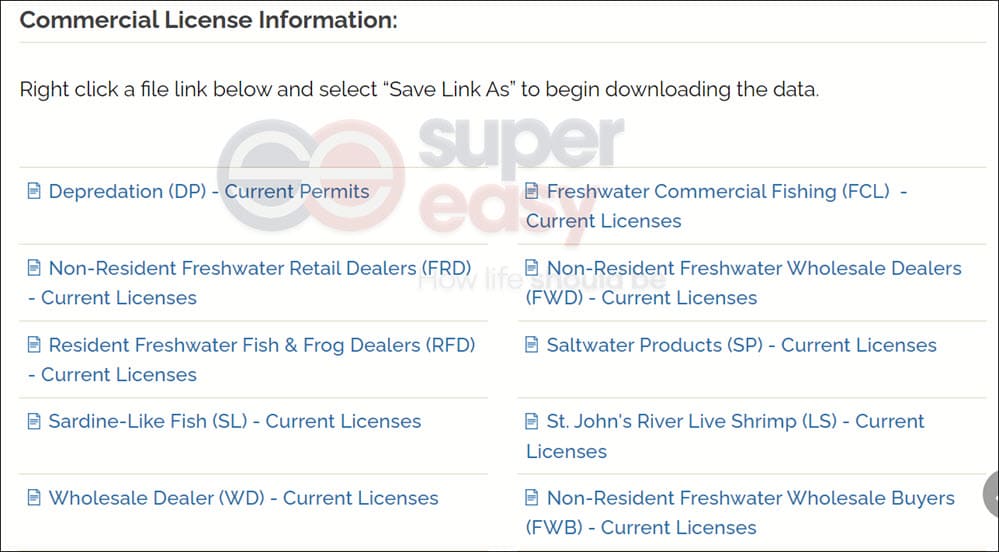
However, it’s important to note that we and users, who don’t know the person’s contact info and address, cannot be certain this fishing permit belongs to this particular “John Smith”. In the file, we found the license holder’s name, license type, address, phone number, and email, but it doesn’t include a photo or birthdate. Without knowing the phone number and address, we cannot guarantee that the permit holder is the same individual in the people search report. Therefore, we recommend that if you successfully trace the original document and find the corresponding contact details, treat them as possibilities rather than definite answers.
Tracing Locations
You can often see address information in various government records. In addition to the above government records, county property records are another government source for address info.
- Google the county’s property record database.
- Search the database with the person’s full name, location address or parcel number.
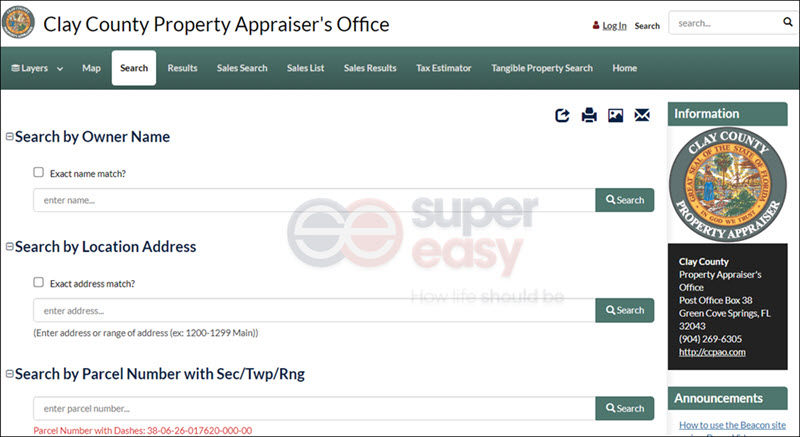
- Review the records to find the property address and additional information.
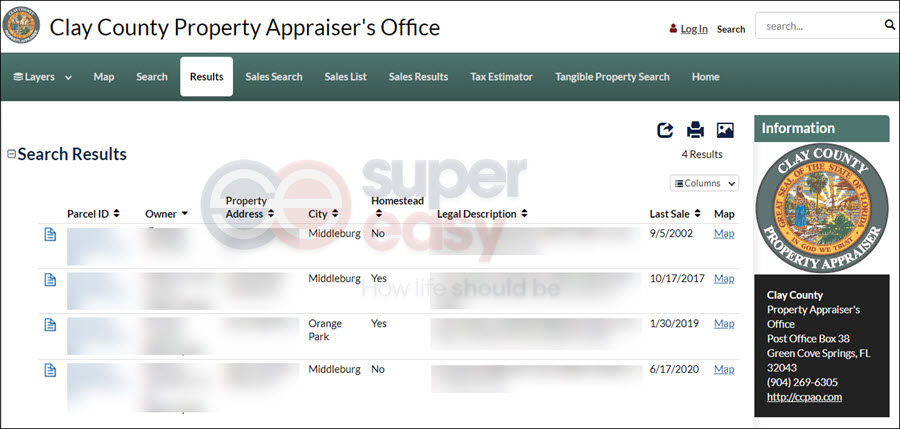
Note: Some county property records may contain sales information. Related documents such as warranty deeds may disclose the ownership relationship and include proof of it, such as a marriage certificate.
The Location History section includes addresses from multiple government sources and home addresses of possible relatives. Additionally, it includes addresses that seem scraped from online sources, such as store addresses that are partly associated with the person.
It’s evident that people search companies strive to provide as much information as possible, while sometimes the report may include redundant data.
Part 2: Tracing non-government records
Tracing Social Media accounts
Most people search reports include links to possible social media profiles, making these social media platforms clearly the data sources. However, how good are these results? We found that people search reports tend to list multiple Facebook and LinkedIn links, but not all of them match since there can be multiple John Smiths. Although these companies claim to support social networking sites such as Instagram, X (formerly Twitter), and Snapchat, the reports can’t always cover all accounts associated with an individual on these supported platforms. Additionally, we found a person with a Facebook account, but the link to that account did not appear in the personal report.
These situations indicate that people search companies try to provide multiple options to ensure a match, but omissions and inaccuracies may occur due to outdated data or issues with their matching algorithms. After all, it is unrealistic to expect perfect matching and continuous data updates from people search companies. Therefore, while these reports can be useful, please note that they are not comprehensive and may not include the latest information.
Job/Business/Education
These data points are also easily found on Facebook and LinkedIn, which are common data sources for people search companies. However, people search reports may sometimes include profiles of other individuals with the same name.
Moreover, people search companies likely collect job and business information by online crawling. Some companies publish employee information, such as photos and brief introductions on their websites. We found this to be the case for the jobs listed in the John Smith report.

Tracing Phone Numbers
Phone numbers are the most challenging type of info to confirm when determining the data source, since the data originate from a wide range of sources. In this part, we will only discuss some of the sources we can identify.
As mentioned in the “Tracing Licenses & Permits” section, some phone numbers originate from this particular source and are considered reliable. However, we have also encountered some phone numbers that were scraped online. By searching the list of phone numbers individually, we discovered some phone numbers were associated with restaurants or fake accounts. These numbers are included in reports due to similarities in names or locations.
Furthermore, we noticed instances where the same number appeared not only under “Possible Phone Numbers” but also listed under the names of “Possible Relatives.” We speculate that people search companies aim to provide as many leads as possible, even if they are not an exact match.
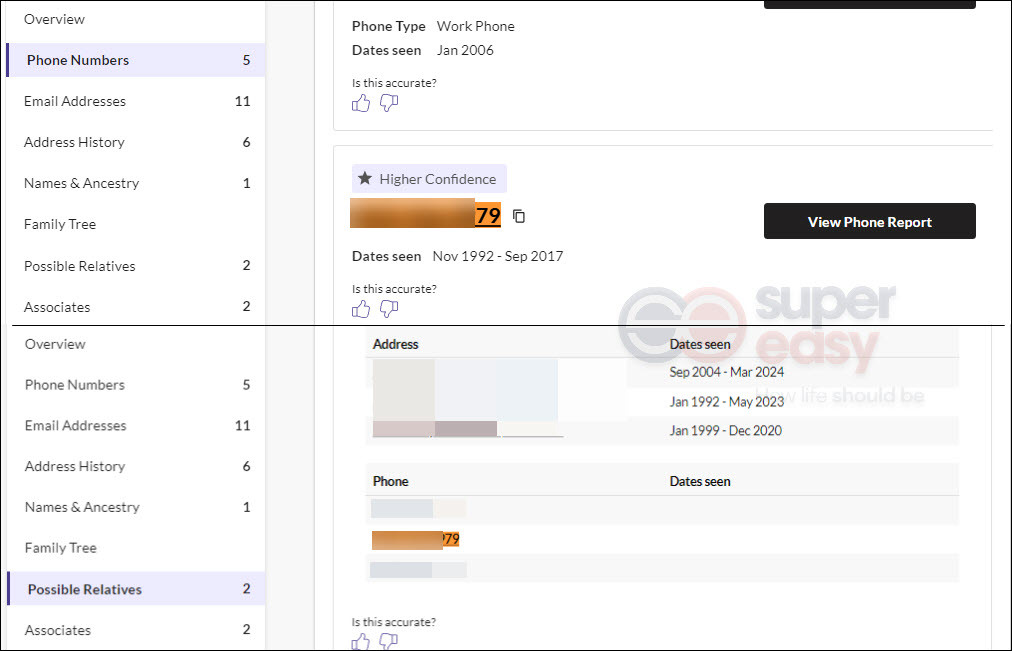
Tracing Email Addresses
Tracing email addresses follows a process similar to that of phone numbers. We found the results may contain the real email address, but the verification process can be time-consuming.
Public records serve as one potential source, and data breaches may expose email addresses. Utilizing tools like haveibeenpwned, we identified many emails from the people search report that had appeared in data breaches. We also used OSINT tools to trace ownership of email addresses, some of which were linked to social media accounts, helping us identify the user.
Additionally, platforms like Facebook and LinkedIn are good for finding emails because many people are willing to share contact info there. Moreover, if someone owns a business, a website, or is a licensed professional, it’s easier to find their details online.
Final thoughts
Through this case study on tracing people search data, we have gained valuable experience and deepened our understanding of the people search industry. We used various methods to search different open-source and public databases based on the information provided in the reports and compared them. We found that a single data point can have multiple sources. By cross-referencing data from various official and public sources, we discovered that the people search industry does not aim for perfect information matching but tends to aggregate more potential information into a single report. This approach may lead to some inaccuracies but also provides users with more possible leads.
 View all of Iris Zheng's posts.
View all of Iris Zheng's posts.